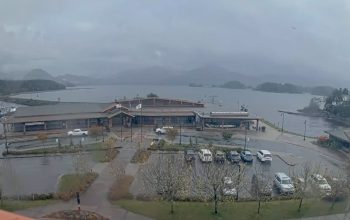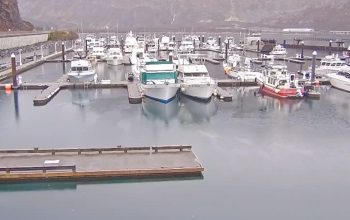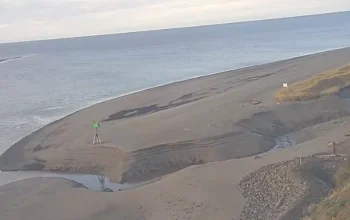Fort Myers Beach Webcams
Fort Myers Beach, located on the Gulf of Mexico in Southwest Florida, is a popular destination known for its stunning coastline. One of the best ways to explore this charming beach town from afar is through live webcams. These webcams offer real-time views of the town’s many attractions. Fort Myers has bustling streets and tranquil beachfronts, giving viewers a taste of the area’s natural beauty and local culture.
Fort Myers Beach Live Cam: A Window to Paradise
The Fort Myers Beach Live Cams is a fantastic tool for anyone looking to experience the beauty of this beach town. These webcams provide live views of popular spots. The main live cam, located near the Fort Myers Beach Pier. The pier cam captures stunning views of the shoreline, the gentle waves of the Gulf, and the gorgeous sunsets. This vantage point is perfect for watching beachgoers enjoying the sun and boats gliding by in the distance.
Additionally, the live cam showcases various points of interest around the pier. This includes the bustling Times Square area, known for its array of shops, restaurants, and street performers. The lively atmosphere can be felt, with people strolling by, musicians, and vendors selling local crafts. Also, a popular spot for fishing and dolphin watching, where visitors gather to cast their lines or simply enjoy the view.
Best Things to Do in Fort Myers, Florida
Fort Myers, Florida, is a paradise for beach lovers, history buffs, and outdoor enthusiasts. Located on the Gulf Coast, this vibrant city offers pristine beaches, unique wildlife, cultural attractions, and thrilling water activities. Whether you’re looking for relaxation or adventure, Fort Myers has something for everyone.
Enjoy the Beautiful Beaches
Fort Myers Beach
This popular beach is known for its soft white sand and warm Gulf waters. Visitors can swim, sunbathe, or take a long walk along the shore. The nearby Times Square area is packed with restaurants, shops, and live entertainment, making it a great spot to unwind.
Lovers Key State Park
If you prefer a more peaceful beach experience, Lovers Key State Park is the perfect escape. The park is home to quiet beaches, scenic trails, and diverse wildlife. Visitors can rent kayaks or paddleboards and explore the beautiful waterways.
Explore Nature and Wildlife
Manatee Park
Winter is the best time to visit Manatee Park, where you can see gentle manatees gathering in warm waters. The park offers kayaking opportunities, walking trails, and picnic areas, making it an excellent spot for nature lovers.
Six Mile Cypress Slough Preserve
This peaceful nature preserve features a boardwalk trail through a lush wetland. Visitors can see alligators, turtles, and various bird species while enjoying a quiet walk through the swampy landscape.
J. N. “Ding” Darling National Wildlife Refuge
Located on nearby Sanibel Island, this wildlife refuge is a must-visit for nature lovers. The mangrove forests and waterways provide a home for alligators, otters, and over 200 bird species. Visitors can explore the area by driving, biking, or kayaking.
Discover History and Culture
Edison and Ford Winter Estates
One of the most famous attractions in Fort Myers is the Edison and Ford Winter Estates. These historic homes belonged to inventor Thomas Edison and automobile pioneer Henry Ford. Visitors can explore the beautiful gardens, Edison’s research lab, and a museum filled with historic artifacts.
IMAG History & Science Center
This interactive museum is perfect for families. It features hands-on exhibits, a 3D theater, and an aquarium with live sea creatures. Kids and adults can learn about science, history, and local wildlife in a fun and engaging way.
Exciting Water Activities
Dolphin and Sunset Cruises
Fort Myers is a great place to see dolphins in the wild. Several tour companies offer boat cruises that take visitors along the Gulf waters, where dolphins love to swim and play. Sunset cruises provide breathtaking views as the sun dips below the horizon.
Fishing Charters
Anglers will love the deep-sea and backwater fishing opportunities in Fort Myers. Charter boats take visitors out to catch snapper, grouper, tarpon, and more. Whether you’re a beginner or an experienced fisherman, there’s a trip for you.
Jet Skiing and Parasailing
For thrill-seekers, Fort Myers Beach offers jet ski rentals and parasailing adventures. Soar high above the ocean for a bird’s-eye view of the coastline or race across the water on a high-speed jet ski.
Exciting Events and Festivals
Edison Festival of Light
Every February, Fort Myers celebrates its most famous resident, Thomas Edison, with a parade, fireworks, and science-themed activities. This festival is one of the biggest events in the area.
ArtFest Fort Myers
Held in downtown Fort Myers, this weekend-long art festival showcases paintings, sculptures, photography, and more from artists around the world. Live music and delicious food make it a must-visit event.
Fort Myers Seafood & Music Festival
Seafood lovers should not miss this festival, which features fresh seafood, live bands, and craft beer. Enjoy dishes like shrimp, lobster, and paella while listening to great music.
Shopping and Dining in Fort Myers
Bell Tower Shops
This open-air shopping center offers high-end boutiques, casual stores, and great dining options. It’s a great place to shop, grab a meal, or just stroll around.
Fleamasters Flea Market
For bargain hunters, Fleamasters Flea Market is a fun spot to explore. With over 900 vendors, visitors can find souvenirs, antiques, clothes, and local crafts.
Downtown River District
This charming area is filled with historic buildings, waterfront restaurants, and lively bars. It’s the perfect place to grab dinner, enjoy live music, and soak in the local atmosphere.
Plan Your Trip to Fort Myers
The best time to visit Fort Myers is from November to May, when the weather is warm but not too hot. A rental car is recommended for exploring the area, though some neighborhoods are walkable.
With its beautiful beaches, outdoor adventures, historic sites, and cultural events, Fort Myers is a fantastic destination for visitors of all ages. Whether you’re looking for relaxation, adventure, or family-friendly activities, this Gulf Coast gem has it all!
The History of Fort Myers
Fort Myers, Florida, has a long and fascinating history that dates back thousands of years. The area has been home to indigenous groups, European settlers, and American pioneers. Over time, it has grown from a remote military outpost to a thriving city known for its beautiful beaches, rich culture, and historic landmarks. This article explores the key events that shaped Fort Myers, from the early Calusa civilization to the present day.
The Indigenous People of Fort Myers
The Calusa: The Original Inhabitants
Long before Europeans arrived, the Calusa people dominated southwest Florida, including the area now known as Fort Myers. They were a powerful and resourceful people that relied on fishing, hunting, and gathering rather than farming. The Calusa built intricate canals, shell mounds, and villages along the Caloosahatchee River, which provided them with food and transportation.
Some historians believe that the Calusa capital was located near modern-day Fort Myers. They controlled vast territories and fiercely resisted European colonization. However, with the arrival of Spanish explorers in the 1500s, the Calusa began to decline due to disease, warfare, and slavery. By the 1700s, they had almost disappeared, leaving behind impressive shell mounds and artifacts that still exist today.
European Exploration and Colonization
Spanish and British Influence
Spain claimed Florida in 1513, when Juan Ponce de León arrived in search of the legendary Fountain of Youth. The Spanish attempted to establish settlements and convert the indigenous people to Christianity, but the Calusa resisted.
During the 1700s, Spain lost control of Florida to Great Britain, only to regain it in 1783. However, Spain’s rule was short-lived. In 1821, Spain sold Florida to the United States, marking the beginning of American influence in the region.
The Seminole Wars and the Establishment of Fort Myers
Conflicts with the Seminole
As American settlers moved into Florida, tensions grew with the Seminole group, who had migrated south from Georgia and Alabama. The U.S. government attempted to force the Seminoles onto reservations, leading to the Seminole Wars (1817–1858). These conflicts were some of the most violent battles between Native Americans and the U.S. military.
Building Fort Harvie and Fort Myers
During the Second Seminole War (1835–1842), the U.S. Army built Fort Harvie along the Caloosahatchee River to serve as a military post. However, it was abandoned in 1842 after the war ended.
In 1850, after another outbreak of violence, the military returned and built a new fort on the same site. This fort was named Fort Myers, in honor of Colonel Abraham Charles Myers, who served as the quartermaster of Florida’s Army Department. The fort covered 139 acres and included 57 buildings, including a large blockhouse and a 1,000-foot-long wharf for docking ships.
Fort Myers played a crucial role in the Third Seminole War (1855–1858), which ended with the forced removal of most Seminoles to the western territories. After the war, the fort was abandoned once again.
The Civil War and the Battle of Fort Myers
Fort Myers During the Civil War
During the American Civil War (1861–1865), Fort Myers became an important base for Union troops, escaped slaves, and Confederate deserters. The Union Army took control of the fort in 1864 and used it as a supply center for soldiers in Florida.
The fort’s location along the Gulf of Mexico made it valuable for the Union Navy, which was blockading Confederate ports. In addition, Fort Myers became a refuge for escaped slaves, who were later recruited into the 2nd United States Colored Infantry Regiment.
The Battle of Fort Myers (1865)
On February 20, 1865, Confederate soldiers launched a surprise attack on the fort. This skirmish, known as the Battle of Fort Myers, was one of the southernmost battles of the Civil War. Though the battle was small, it symbolized the ongoing struggle for control of Florida.
The Union troops successfully defended the fort, but the war was already coming to an end. A few months later, the Civil War ended, and the Union abandoned Fort Myers.
Post-War Settlement and Growth
Captain Manuel A. Gonzalez: The First Settler
After the Civil War, Fort Myers remained largely uninhabited until 1866, when Captain Manuel A. Gonzalez arrived with his family. Gonzalez had previously worked as a mail and supply carrier for the Union Army during the war. He recognized the potential of the area and founded the first trading post, where he traded goods with the Seminole people and other settlers.
Early Development and Incorporation
Over the next two decades, more settlers arrived, and the community grew. In 1885, Fort Myers was officially incorporated as a town, with a population of 349 residents. This made it the second-largest town on Florida’s Gulf Coast, after Cedar Key.
The Arrival of Thomas Edison and Henry Ford
Edison’s Influence
In 1885, Thomas Edison, the famous inventor, visited Fort Myers and fell in love with its warm climate. He purchased 13 acres along the Caloosahatchee River and built his winter home, Seminole Lodge.
Edison conducted experiments at his Fort Myers laboratory, planted botanical gardens, and even offered to install an electric lighting system for the town. His presence helped put Fort Myers on the map and attracted wealthy tourists and investors.
Henry Ford and the Millionaires’ Club
Edison’s close friend, Henry Ford, visited Fort Myers in 1916 and also bought a winter home, which he named The Mangoes. Ford, Edison, and tire magnate Harvey Firestone formed the “Millionaires’ Club,” a group of influential businessmen who spent winters in Fort Myers. Their presence brought national attention to the city.
20th-Century Growth and Modern Development
The Railroad and the Royal Palm Hotel
In 1904, the Atlantic Coast Line Railroad connected Punta Gorda to Fort Myers, making the city more accessible. Around the same time, the luxurious Royal Palm Hotel was built, turning Fort Myers into a popular winter destination for wealthy northerners.
World War II and Economic Expansion
During World War II, Fort Myers played a key role in military training. The Page Field Air Base was used to train pilots, and after the war, many veterans decided to settle in the area. This led to rapid population growth and economic expansion.
Modern Fort Myers
Today, Fort Myers is a thriving city with a population of over 100,000 people. It is known for its beaches, cultural attractions, and historic sites, including the Edison and Ford Winter Estates, which are now popular museums. The city continues to attract tourists, retirees, and entrepreneurs looking to enjoy the beauty and history of southwest Florida.
From its origins as a Calusa stronghold to its role in the Seminole Wars, the Civil War, and the rise of industry, Fort Myers has a rich and diverse history. The city has transformed from a remote military outpost into a bustling center of culture, business, and tourism.
Today, Fort Myers remains one of Florida’s most charming destinations, offering visitors a glimpse into its storied past while embracing the future with growth and innovation.
The Geography of Fort Myers, Florida
Fort Myers, Florida, is a beautiful city located on the southwest coast of the state. Known for its warm climate, scenic waterways, and coastal landscapes, it attracts visitors and residents looking for sunshine and outdoor activities. The city’s geography plays a key role in its climate, economy, and natural environment.
Location and Size
Fort Myers is situated at approximately 26°37′N 81°50′W. It lies along the Caloosahatchee River, which flows westward into the Gulf of Mexico. The city is part of Lee County and serves as its county seat.
According to the United States Census Bureau, Fort Myers has a total area of 40.4 square miles (105 km²). Of this, 31.8 square miles (82 km²) is land, while 8.6 square miles (22 km²) is water, making up 21.25% of the city’s total area. The combination of land and water gives Fort Myers its distinct coastal charm.
Climate and Weather
Tropical Monsoon Climate
Fort Myers has a tropical monsoon climate (Am), which means hot, humid summers and warm, dry winters. The city enjoys sunshine year-round, making it an attractive destination for outdoor enthusiasts.
Temperature Variations
Temperatures in Fort Myers are generally warm. The average daily temperature ranges from 64.7°F (18.2°C) in January to 83.4°F (28.6°C) in August. The annual mean temperature is 75.4°F (24.1°C).
Extreme temperatures are rare. The highest temperature ever recorded in Fort Myers was 103°F (39°C) on June 16–17, 1981. The lowest recorded temperature was 24°F (-4°C) on December 29, 1894. However, freezing temperatures are extremely uncommon.
Rainfall and Storms
Fort Myers receives about 57 inches of rainfall per year, with most of it falling during the wet season from June to September. These four months bring about 67% of the city’s annual rainfall, mainly through afternoon thunderstorms.
From October to May, the dry season sets in, with monthly rainfall averaging less than 3.5 inches. During particularly dry winters and early springs, droughts can occur, increasing the risk of brush fires.
Thunderstorm Capital of the U.S.
Fort Myers experiences thunderstorms frequently. The city has 89 days per year where thunderstorms occur close enough for thunder to be heard. This makes it one of the most thunderstorm-prone cities in the United States.
Coastline and Waterways
The Caloosahatchee River
The Caloosahatchee River is one of the most important geographical features of Fort Myers. This wide, navigable river stretches from Lake Okeechobee to the Gulf of Mexico, passing directly through the city. The river provides boating, fishing, and wildlife-watching opportunities, making it a vital part of Fort Myers’ economy and recreation.
Barrier Islands and Gulf of Mexico
Fort Myers is located near several barrier islands, including Sanibel Island, Captiva Island, and Estero Island. These islands protect the mainland from ocean waves and storms while offering stunning beaches and diverse ecosystems.
Estuaries and Wetlands
The city is also home to mangrove forests, estuaries, and marshlands, which support a variety of wildlife. The mixture of saltwater and freshwater environments makes Fort Myers an important habitat for manatees, dolphins, and numerous bird species.
Vegetation and Wildlife
Fort Myers’ subtropical and tropical climate supports a rich variety of plants and animals. Some of the most common trees include:
- Royal Palms – These iconic trees line McGregor Boulevard, giving Fort Myers the nickname “City of Palms.”
- Mangroves – Found along the coast, mangroves help prevent erosion and provide a habitat for fish and birds.
- Cypress Trees – These trees thrive in wetlands and swampy areas, such as the Six Mile Cypress Slough Preserve.
The region is home to many native and migratory birds, including herons, egrets, ospreys, and pelicans. Manatees and dolphins are frequently seen in the waters around Fort Myers, particularly in Manatee Park and along the Caloosahatchee River.
Hurricane Risk and Natural Disasters
Hurricane Season
Fort Myers is located in a region prone to hurricanes. The Atlantic hurricane season runs from June 1 to November 30, with the highest risk occurring between August and October.
Some of the most significant hurricanes to impact Fort Myers include:
- Hurricane Donna (1960) – Brought strong winds and flooding.
- Hurricane Charley (2004) – Made landfall near Punta Gorda, causing major damage.
- Hurricane Ian (2022) – One of the strongest hurricanes to hit southwest Florida, leading to severe flooding and destruction.
Flooding and Storm Surge
Because of its low elevation and coastal location, Fort Myers is vulnerable to storm surges and flooding. The city has taken steps to improve drainage systems and reinforce infrastructure to reduce hurricane damage.
Fort Myers’ geography is shaped by its tropical climate, coastal location, and extensive waterways. With warm temperatures, heavy summer rainfall, and a rich ecosystem, the city offers beautiful natural scenery and abundant outdoor activities. However, its location also makes it vulnerable to hurricanes and flooding.
Despite these challenges, Fort Myers remains a vibrant and growing city, attracting residents and tourists alike with its beaches, rivers, and natural beauty.


